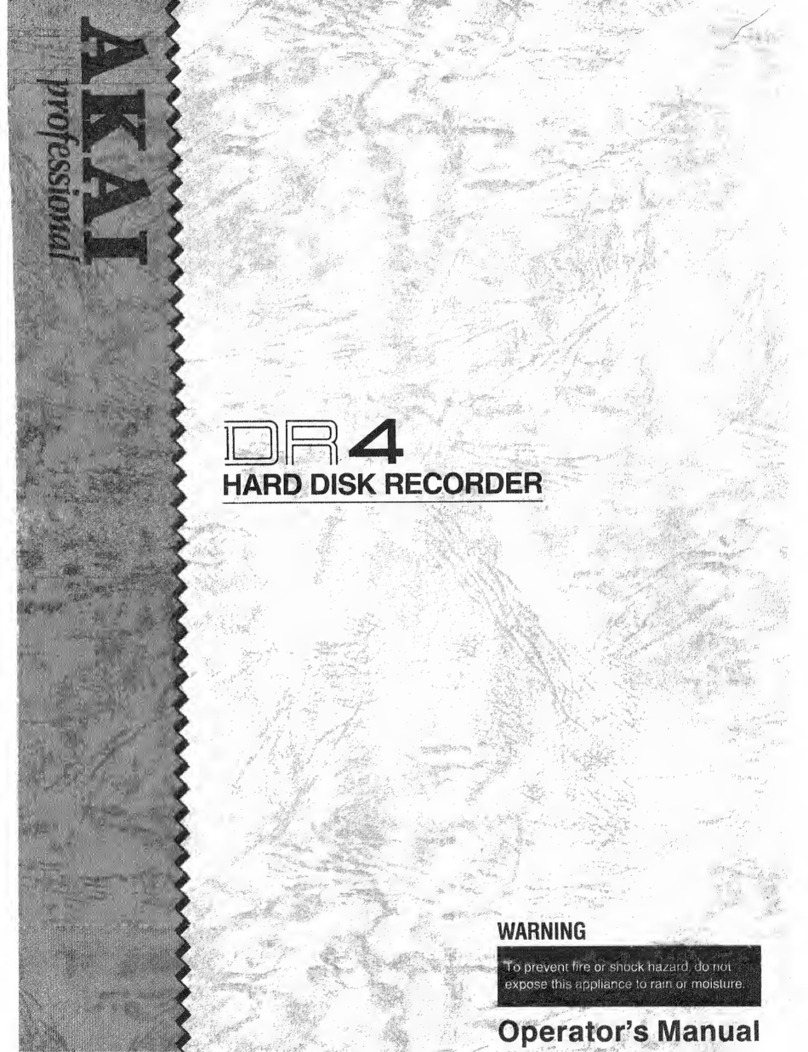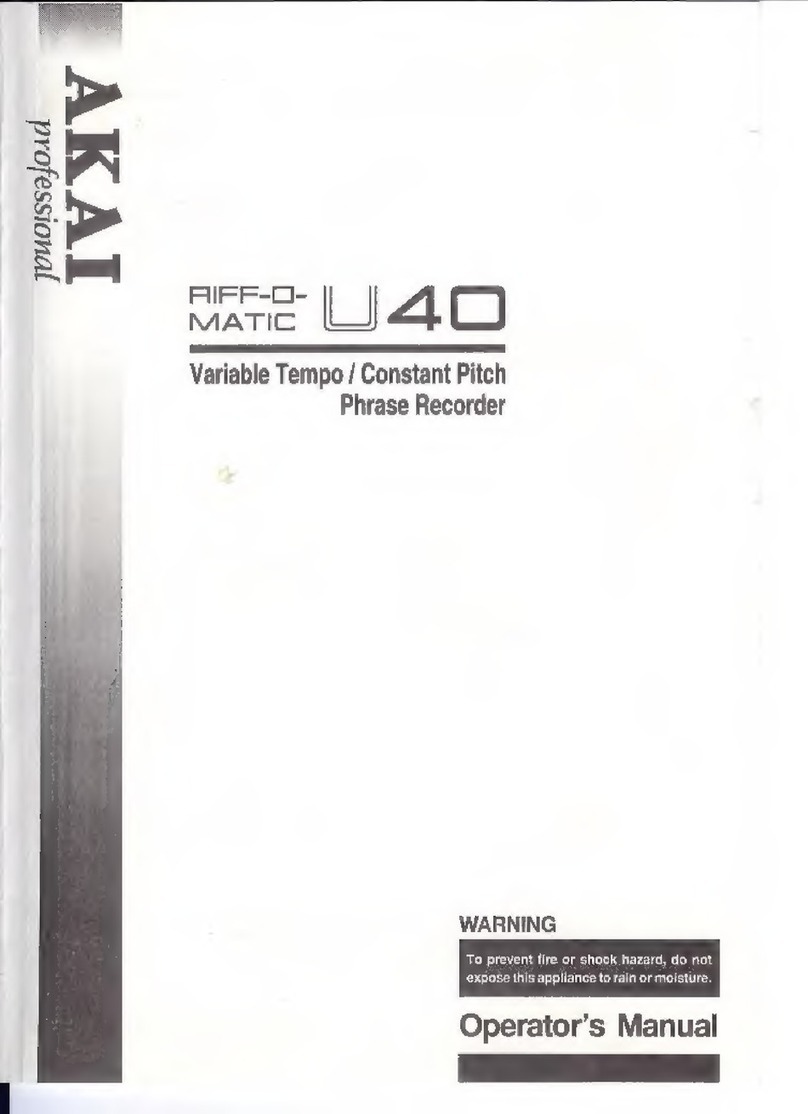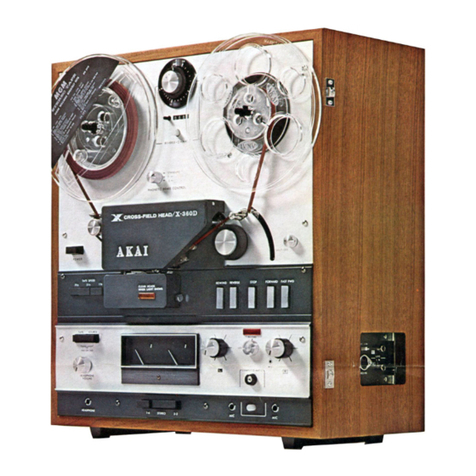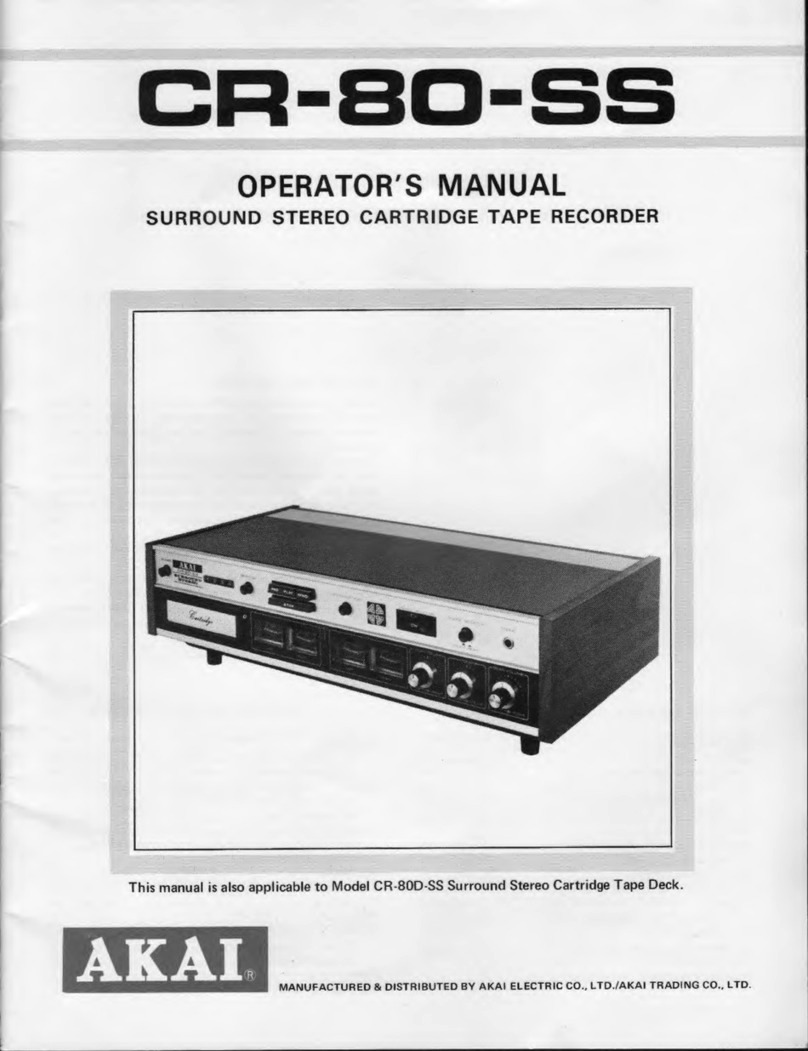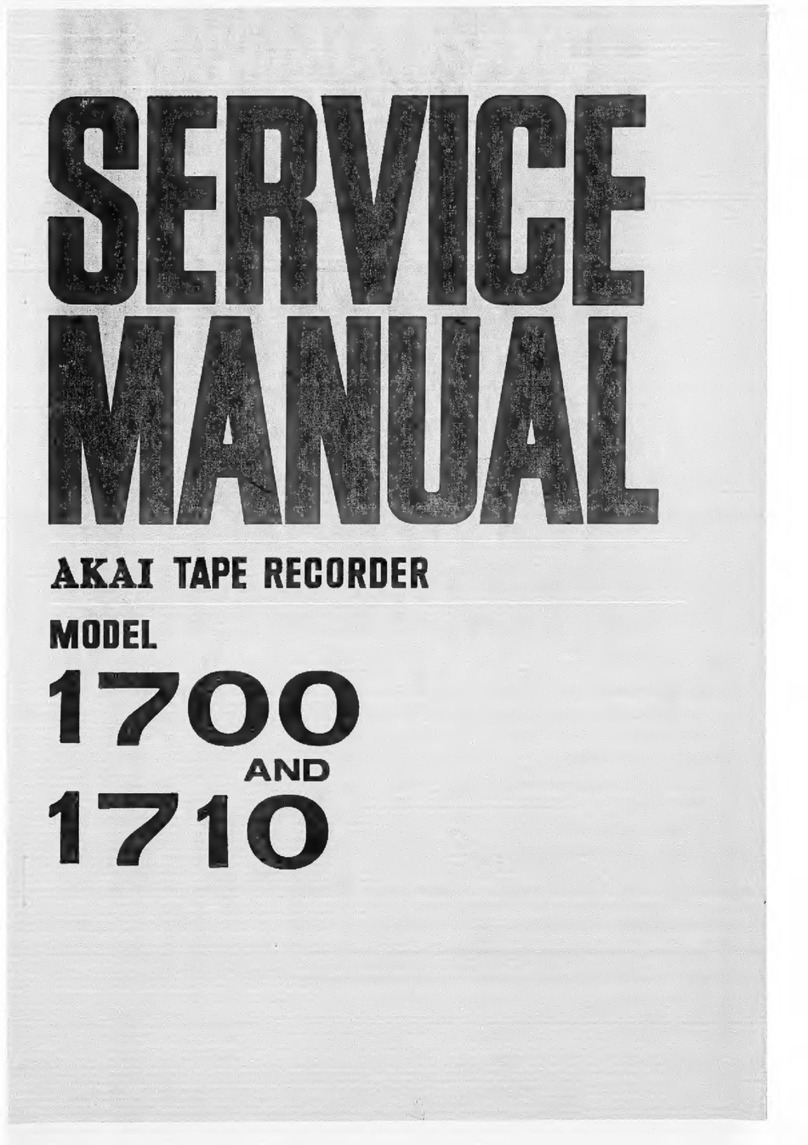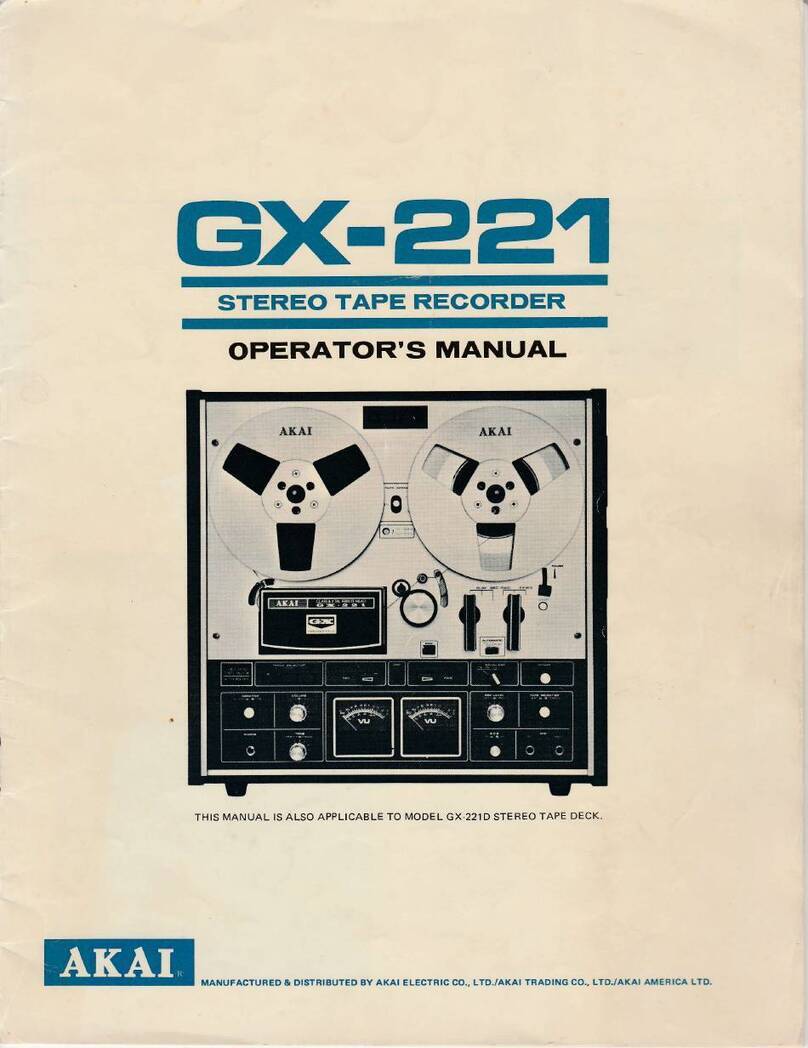
Il.
MEASURING
METHOD
1.
TAPE SPEED DEVIATION
1.
Method involving use
of
pre-recorded tape.
Playback on the tape recorder to be tested a tape
pre-recorded
at
1,000 Hz ± 0.1% for measuring tape
speed deviation. Connect the appropriate
output
to
a
frequency counter me ter in arder
to
measure the tape
speed deviation from the deviation
of
the
~easured
frequency.
2. Method involving use
of
timing tape (designed for
tape speed measurement).
This
method
utilizes a timing tape marked at intervals
of
7-1/2". The running time
of
the tape over 60
marked section
is
measured in
arder
to
calculate the
deviation
of
the tape speed.
In
applying this method,
however,
it
should be born in
mind
that
should the
timing tape stretch or contract, measurement error
is
inevitable,
so
that
it
is
necessary to measure the total
length
of
the tape in advance.
2.
WOW
AND
FLUTTER
Playback the 3,000 Hz pre-recorded tape whose wow
and flutter level
is
guaranteed to be smaller than 0.07%
for measurement by means
of
a wow meter.
It
is
also
possible for a 3,000 Hz sine wave to be recorded and
played for measurement
by
means
of
the wow meter. In
this case, however, the wow meter indicates a value
as
twice the value given in the specification on the first
page.
3. SIGNAL
TO
NOISE RATIO
X-V
Line
output
V.T.V.M.
Set the speed selector Switch on
"7-1/2"
ips position
and playback a tape containing a 1,000 Hz sine wave
recorded at
"0"
VU level on a standard recorder.
Connect a V.T.V.M.
to
the line
output
jack
of
the
recorder and measure its
output.
Then remove the tape and measure the noise level under
the same condition. Convert each
of
the measured values
into decibels.
4.
TOTAL
HARMONIC DISTORTION
FACTOR
1 Kc/s
Audio Distortion
--
X-V
--
Oscillator me
ter
Connect the measuring instrument
as
shawn above, and
record the 1,000
Hz
sine wave at
"0"
VU. Playback the
resultant signal and measure the overall distortion factor.
Measure the noise level
of
the tape recorder with the
tape removed ; connect the audio oscillator directly to
the distortion meter for measurement
of
the distortion
factor
of
the oscillator.
The required distortion factor may be
obtained
from the
results
of
the above measurement
by
the following
formula.
do=d-d1-d2
where, d0=Requred
d=Overall distortion factor
d1
=Noise level
d2
=Distortion factor
of
the oscilla
tor
(Note : New tape
of
particularly good quality should
be
used for measurement
of
the distortion factor.)
5. POWER OUTPUT
Playback the tape pre-recorded with a sine wave of
1,000 Hz at
"0"
VU, and connect an sn
load
resistor to
the
output
terminais
of
the
tape recorder : measure the
voltage across the resistor with the volume control set to
maximum. Use the following formula
to
obtain
the
required
output
:
E2
W=R
Where, W
..........
Output
(watt)
E
...........
Output
voltage
R
...........
Resistor
(Sn)
(Note : The sn resistor used in this measurement must
be
of
high precision).
6. CROSS TALK
(Cross talk between
the
tracks)
(TAPE)
CD
(
@'
®
®'
Tape direction @ )
®'
@
w~
CD'
Tape
dir
ection
As
shawn in the figure, first record a 1,000 Hz sine wave
on track No. 3 at + 3 VU level. Next, remove the
1,000 Hz
input
signal and record under a non-input
condition.
Then
playback the tape on track No. 3 and No. 1
(reversed condition
of
tape) through the 1,000
Hz
B.P.F. (Band Pass Filter) and obtain a ratio between the
two from the following formula.
Eo
C = 20
log--
(db)
E2-E1
C=Desired cross talk ratio
(db)
E0= 1,000
Hz
signal
output
level
E2= 1,000
Hz
cross talk
output
level
E1
=No-input signal record level












